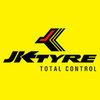Filter interviews by
Savera Auto Comps Senior Quality Engineer Interview Questions and Answers
Savera Auto Comps Senior Quality Engineer Interview Experiences
1 interview found
I appeared for an interview in Oct 2024.
(5 Questions)
- Q1. Last company job profile questions
- Q2. Rejection control method used
- Ans.
Statistical process control (SPC) and root cause analysis are used for rejection control.
Implementing Statistical Process Control (SPC) to monitor and control the quality of processes.
Conducting root cause analysis to identify and address the underlying reasons for rejections.
Utilizing quality tools such as Pareto analysis, fishbone diagrams, and 5 Whys to investigate rejection trends.
Implementing corrective and preven...
- Q3. Quality standards Audits ISO 9001 2015
- Q4. Line Daily rejection PPM MONITORING, MONTHLY QA MEETING, MOM
- Q5. WHAT IS RAW MATERIAL DEFECTS DECRIBE
- Ans.
Raw material defects are imperfections or flaws in the materials used in manufacturing processes.
Raw material defects can include cracks, chips, dents, scratches, discoloration, and impurities.
These defects can impact the quality and performance of the final product.
Examples of raw material defects include a batch of steel with visible cracks, a shipment of plastic with discoloration, and a roll of fabric with tears.
In...
Skills evaluated in this interview
Top trending discussions






Interview questions from similar companies

I applied via Referral and was interviewed before Sep 2020. There were 3 interview rounds.
Interview Questionnaire
1 Question
- Q1. Please explain about your profile
Interview Preparation Tips
Be bold in your explanations.
Questions mainly fall from your profile explanation.
Try to tell what you have worked with.

I applied via Approached by Company and was interviewed before Aug 2022. There were 3 interview rounds.

(2 Questions)
- Q1. Introduction of ypur
- Ans.
I am a highly experienced Sr. Engineer with a strong background in various engineering disciplines.
Over 10 years of experience in mechanical, electrical, and civil engineering
Led multiple successful projects from concept to completion
Proficient in CAD software such as AutoCAD and SolidWorks
- Q2. Salary discussion and discussion about pearks.
(2 Questions)
- Q1. Your kra and dwm Discussion related to your work field.
- Q2. Why we select you ,what is your goods & bad,
Interview Preparation Tips
- Line balacing
- Lean Manufacturing Tools
- 4m change
- Redbin analysis
- Rejection Control
- Productivity Improvement
- OEE Calculation
- Kaizen Implementation
- 5S System
- Breakdown Analysis
- Process parameters
- Measuring instrument
- MSA
- SPC Study

Senior Quality Engineer Interview Questions & Answers
Krishna Marutiposted on 16 Sep 2023
I applied via Approached by Company and was interviewed in Aug 2023. There were 2 interview rounds.

(5 Questions)
- Q1. QMS Implementation
- Ans.
Implementing a Quality Management System (QMS)
Understand the organization's quality objectives and requirements
Identify and document processes, procedures, and work instructions
Establish quality policies and objectives
Define roles and responsibilities for quality management
Implement document control and record keeping
Develop and implement training programs
Establish metrics and performance indicators
Conduct internal aud...
- Q2. IATF , ISO 14001 ISO 45001 KNOWLEDGE
- Q3. Implementation of IMS
- Ans.
IMS implementation involves the integration of various management systems to improve efficiency and effectiveness.
IMS stands for Integrated Management System
It combines multiple management systems, such as quality, environmental, and health and safety
IMS implementation aims to streamline processes, reduce duplication, and improve overall performance
Examples of IMS frameworks include ISO 9001, ISO 14001, and OHSAS 18001
- Q4. Core tools knowledge
- Q5. 7 qc tools implementation
- Ans.
The 7 QC tools are a set of problem-solving techniques used in quality management.
The 7 QC tools include: check sheets, histograms, Pareto charts, cause-and-effect diagrams, control charts, scatter diagrams, and flowcharts.
These tools help identify and analyze quality problems, prioritize issues, and track improvement progress.
For example, a check sheet can be used to collect data on defects, while a Pareto chart can v...
Interview Preparation Tips
- QMS
- IATF
- ISO 14001
- ISO 45001
- Core tools
Skills evaluated in this interview

Senior Quality Engineer Interview Questions & Answers
Krishna Marutiposted on 25 Feb 2024
I applied via Referral and was interviewed in Aug 2023. There was 1 interview round.
(1 Question)
- Q1. Just will ask aboutbyiur previous company role and responsibilities
Interview Preparation Tips

Senior Engineer Interview Questions & Answers
Motherson Automotive Technologies and Engineeringposted on 7 Nov 2023
I applied via Referral and was interviewed in Oct 2023. There were 3 interview rounds.

(3 Questions)
- Q1. About plastic material
- Q2. About plastic injection molding machine
- Q3. About 4m change
(2 Questions)
- Q1. About family background
- Q2. About current company
Interview Preparation Tips

(1 Question)
- Q1. How to handle customer complain used quality tool
- Ans.
Use quality tools like Pareto chart, fishbone diagram, and 5 Whys to analyze and address customer complaints.
Identify the root cause of the complaint using tools like fishbone diagram.
Prioritize the issues using a Pareto chart to focus on the most critical problems first.
Use the 5 Whys technique to dig deeper into the root cause of the complaint.
Implement corrective actions based on the analysis to prevent similar comp

I applied via Approached by Company and was interviewed in May 2024. There was 1 interview round.
(5 Questions)
- Q1. 7qc tools & describe it as per example
- Ans.
7QC tools are a set of quality control tools used for process improvement and problem-solving.
Check sheet: Used to collect and analyze data, such as tallying defects in a manufacturing process.
Pareto chart: Helps identify the most significant factors contributing to a problem, based on the 80/20 rule.
Cause and effect diagram (Fishbone diagram): Used to identify and analyze potential causes of a problem.
Histogram: Repre...
- Q2. Difference between QA & QC
- Ans.
QA focuses on preventing defects in the process, while QC focuses on identifying defects in the product.
QA is process oriented, focusing on preventing defects by improving processes and procedures.
QC is product oriented, focusing on identifying defects through testing and inspection.
QA involves activities like reviews, audits, and process improvements.
QC involves activities like testing, inspections, and quality contro...
- Q3. Define of FMEA TYPE
- Ans.
FMEA stands for Failure Modes and Effects Analysis, a systematic method for identifying and preventing potential failures in a system.
FMEA is a structured approach to identifying and prioritizing potential failure modes in a system.
It involves analyzing the potential effects of these failures and developing mitigation strategies.
FMEA helps in improving the reliability, safety, and quality of a system or process.
There a...
- Q4. Process & product audit type of poka yoke
- Ans.
Process & product audit type of poka yoke ensures errors are prevented during audits.
Poka yoke in process audit involves using checklists to ensure all steps are followed correctly
Poka yoke in product audit involves using sensors to detect defects before they occur
Examples include using color-coded labels to prevent mix-ups in audits
- Q5. 8D Capa, 5S, pervios company job profile and DWM

(2 Questions)
- Q1. About drive and working
- Q2. About plc and working
(2 Questions)
- Q1. About family and members
- Q2. Salary structure and expectations
Interview Preparation Tips

Senior Engineer Interview Questions & Answers
Motherson Automotive Technologies and Engineeringposted on 9 Oct 2023
I applied via Referral and was interviewed before Oct 2022. There was 1 interview round.
(2 Questions)
- Q1. Injection molding process
- Q2. Six step study ,
- Ans. Gate freeze, holding, pressure drop, viscosity, cooling or dimensions study.
Interview Preparation Tips
Savera Auto Comps Interview FAQs
Tell us how to improve this page.
Interview Questions for Popular Designations
- Quality Engineer Interview Questions
- Quality Inspector Interview Questions
- Quality Controller Interview Questions
- Quality Assurance Interview Questions
- Quality Manager Interview Questions
- Quality Executive Interview Questions
- Quality Assurance Officer Interview Questions
- Quality Assurance Quality Control Engineer Interview Questions
- Show more
Savera Auto Comps Senior Quality Engineer Interview Process
based on 1 interview
Interview experience
Senior Quality Engineer Interview Questions from Similar Companies
Fast track your campus placements
|
Production Engineer
15
salaries
| ₹1.6 L/yr - ₹4.5 L/yr |
|
Store Officer
10
salaries
| ₹2.2 L/yr - ₹3.5 L/yr |
|
Quality Engineer
10
salaries
| ₹2 L/yr - ₹3.2 L/yr |
|
QA Engineer
8
salaries
| ₹1.5 L/yr - ₹2.8 L/yr |
|
Design Engineer
6
salaries
| ₹1.9 L/yr - ₹3.7 L/yr |

Yazaki

Delphi TVS

JK Tyres

Lucas-TVS
- Home >
- Interviews >
- Savera Auto Comps Interview Questions >
- Savera Auto Comps Senior Quality Engineer Interview Questions












